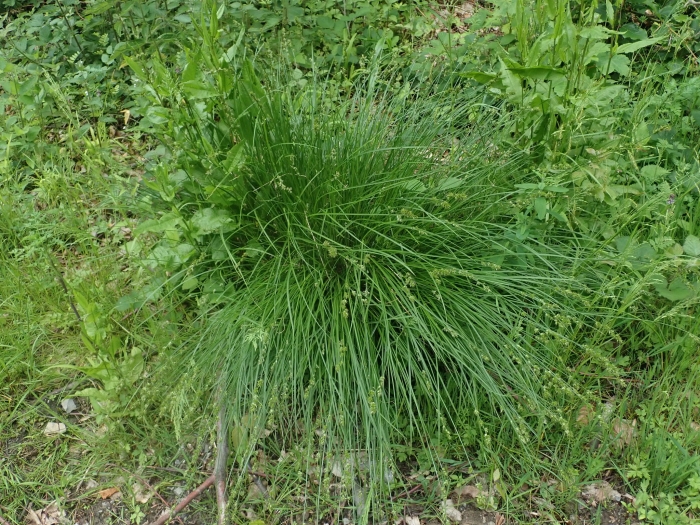Star Sedge
(Carex echinata)
Star Sedge (Carex echinata)
/
/

© agujaceratops
CC BY 4.0
Image By:
© agujaceratops
Recorded By:
Copyright:
CC BY 4.0
Copyright Notice:
Photo by: © agujaceratops | License Type: CC BY 4.0 | License URL: http://creativecommons.org/licenses/by/4.0/ | Uploader: agujaceratops | Publisher: iNaturalist |

















Estimated Native Range
Summary
Carex echinata, commonly known as star sedge or little prickly sedge, is a perennial herbaceous plant that is part of the sedge family. It is native to a variety of wetland habitats including peat bogs, fens, wet meadows, and marshes across North and Central America, as well as parts of Eurasia. Star sedge typically grows to a height of 10-100 cm (4-39 inches), with solid, triangular, and ridged stems. The leaves are narrow and grass-like, mostly clustered at the base of the plant. The inflorescences are distinctive, star-shaped spikelets that appear in late spring to early summer, adding a unique texture to the landscape but are not particularly showy in terms of color.
Star sedge is valued for its ability to thrive in wet conditions and is often used in rain gardens, wetland restoration projects, and as a component in naturalized plantings. It is relatively low maintenance, requiring consistently moist to wet soil conditions and can tolerate a range of light conditions from full sun to part shade. Carex echinata is not known for any significant disease or pest problems, making it a reliable choice for challenging wet sites. However, it is not suitable for dry areas and can spread in ideal conditions, potentially becoming aggressive in some settings.CC BY-SA 4.0
Star sedge is valued for its ability to thrive in wet conditions and is often used in rain gardens, wetland restoration projects, and as a component in naturalized plantings. It is relatively low maintenance, requiring consistently moist to wet soil conditions and can tolerate a range of light conditions from full sun to part shade. Carex echinata is not known for any significant disease or pest problems, making it a reliable choice for challenging wet sites. However, it is not suitable for dry areas and can spread in ideal conditions, potentially becoming aggressive in some settings.CC BY-SA 4.0
Plant Description
- Plant Type: Grass
- Height: 1-2 feet
- Width: 1-1.5 feet
- Growth Rate: Slow
- Flower Color: N/A
- Flowering Season: Spring, Summer
- Leaf Retention: Deciduous, Semi-deciduous
Growth Requirements
- Sun: Full Sun, Part Shade
- Water: High
- Drainage: Medium, Slow
Common Uses
Erosion Control, Low Maintenance, Water Garden
Natural Habitat
native to a variety of wetland habitats including peat bogs, fens, wet meadows, and marshes across North and Central America, as well as parts of Eurasia
Other Names
Common Names: Hedgehog Sedge, Prickly Sedge
Scientific Names: , Carex echinata, Carex echinata var. grypsos, Carex leersii var. angustata, Carex muricata, Carex muricata, Carex stellulata f. oligantha, Vignea echinata,
GBIF Accepted Name: